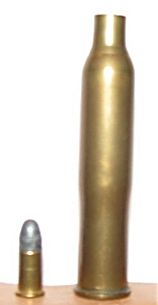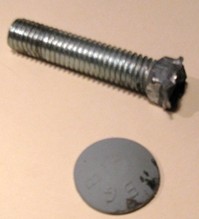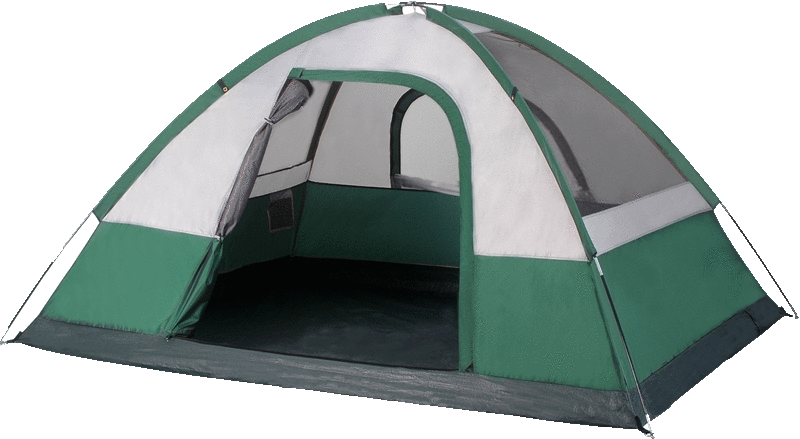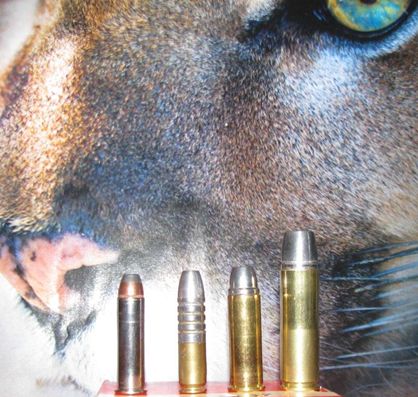Part 1
You may have noticed lately that Dan was pressing us all for a story. OK, I’m
really not done, but I’ll share what I can about my latest project.
I always wondered if there is still ‘room’ for my own wildcat caliber with at
least some practical value. Not reaching some new velocity plateau. Perhaps a
more efficient caliber and, well, mine. Knowing that when we compare the power
of a given cartridge to the amount of powder it consumes and take that ratio,
the .22 Short appears to be the most efficient chambering. Taking this to a
bigger and more practical level flushed out the .380ACP case. This had to be
explored!
Available load data for various cartridges indicates that we can safely burn
more powder when the bore size increases. My idea was to match a bigger than
.355” diameter projectile to the .380 case. The .375 size seemed an obvious
choice.

.22 Short and
7mm Brutus
|
A stepped up projectile is nothing new. Millions of 22s prove its merits.
Further, Nagant revolver ammo relies on significant case expansion upon firing.
There was also a wildcat attempt of mine from years ago. I had labeled that
one as 7mm Brutus, because as the picture shows, it developed serious
extraction problems. But it demonstrated nicely how brass willingly expands.
Ok then, the Arizona desert near Phoenix has produced much .380 ACP brass over
the years. No big deal to me to consume some in a one-shot-use for my
application. I already had a Thompson Center Contender frame on hand. A
special barrel was all that separated me from turning this .380-375 concept
into reality. To keep things practical I wanted barrel length to be 10”, to
me a much preferred weapon to carry in the field. Just as a .30 Herrett
compares favorably to a .30-30 Win in shorter barrels, so the .380-375 simply
maximizes the rifled portion where bullet acceleration takes place. Yeah,
yeah, the gunsmith rolled his eyes some when I showed him my plans, yet was
intrigued by the looks of a dummy round. We had traction when he nodded.
Almost as an afterthought, I specified “with muzzle brake”.
Meanwhile there was the issue of propellants to consider. Again, recent
developments gave hope. We can get more performance from formerly standard
calibers, like the Hornady Superformance line of ammo demonstrates. As a
projectile travels down the rifled bore there is at some point a maximum
pressure which then decreases again. Apparently the trick is to keep such
near-maximum pressures for as long as possible.

Custom TC barrel with brake for the 380-375 (and
.380 Auto for comparison)
|
Of course I found myself in new territory now, being just a common handloader.
The encouragement to continue came from the realization that we did not get
to the moon and back without taking certain risks. Please understand
therefore that at this time I will not share all the details. Next came
much studying of load data for the .380 Auto and ever-larger straight-walled
calibers, and cartridges of basically the same case capacity but different
caliber (.243 Win, .260 Rem, 7mm-08, .308 Win) and powder types. Several of
those powders I had on hand. By fixing my powder measure setting, then
dispensing various types of propellants, I determined their densities. After
all, I only had the capacity of the parent 380 case to work with, and wanted
to put the maximum amount of powder by weight in there. Borrowing from the
rocket concept again, I settled as first test load on a staged approach, if
you will.
That’s about the time Dan urged us on for a story. OK, I may have rushed
things a bit, because at that time the barrel was also ready, and quite frankly
I was so anxious for my cartridge. Anyway, I’ll share the following:

Head sheared off when bullet
impacted 12” plate
|
First a resized case received a small rifle magnum primer. Then, without
disturbing that case, I trickled in a little bit of very fast-burning pistol
powder. Then in went some mid-range pistol powder. On top of that settled
quite a bit of magnum-type pistol powder. Finally, I counted out quite a few
sticks of magnum rifle powder and placed them carefully into the case until it
was full. That was good because I needed definite powder compression when
seating the 275 grain bullet so that when handling the loaded round all these
powders would not shift relative to each other within the case. This all
happened right before the 29th of March. So, prior to getting to the Game &
Fish EXPO that Saturday morning, I detoured to our place in the desert near
Table Mesa. When I got there I set up that heavy 12 inch steel plate, about
twenty paces out. Dang, forgot my chronograph. Oh well, publishing deadline
was looming. So I loaded the Contender, leveled the open sights onto the steel
plate, and squeezed.
There is something very satisfying when all at once the gun barks tremendously,
belches out an intense flame and recoils like a mule. Made me wonder what
surviving a lightning strike would feel like. I thanked myself for ordering
the barrel with a brake. Oh, there was more eye candy! The bullet hit the
steel plate, so hard that the mounting bolt sheared, and the plate crashed to
the ground.
My mind wanted to do this again! My hand was happy that I was already out of
ammo. I kicked myself for forgetting the Chrony. Opening the T/C showed that
the primer was flat. That was OK, as I did not intend to use that piece of
brass again anyway. Extraction had a hint of stubbornness. Hmm, maybe a
rimmed case would be better. So, here are the next steps:

|
Part 2
If you have until now just stopped short of calling me about possibly getting
your own .380-375 Overbite barrel and load data, then check out the issue date
of this story, because you are an April fool  .
.
Oh, it is fact that the gas check heel on a cast .375 caliber projectile fits
snugly into a .380 or 9mm case. It is also true that a 7x65R will chamber in,
fire and readily extract from a 7mm Mag (don’t do this at home). I had read
about it years ago in a German magazine, where the 7x65R is very common, and
some hunter inadvertently fired one in a 7mm Mag rifle, and then reported about
it. Several years back I had a 7mm Mag Savage bolt gun, fired a reduced-load
7X65R round in the Savage on purpose, with the “Brutus” picture here showing
the result. And the mounting bolt sheared when David hit a 6”plate-made
jackrabbit during our rifle varmint event last year. That barrel? Well, in
life things rarely are what they appear to be! The rest … well, Dan asked for
a story – you got one this time  .
.
© Honeywell Sportsman Club. All rights reserved.

![]()






 .
.

